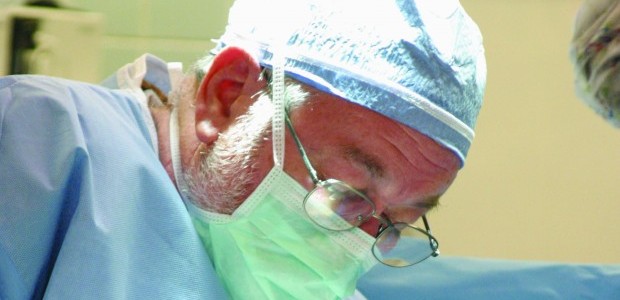
Distracted driving a wreck waiting to happen
April 18, 2012TEDA China trip taking shape
April 18, 2012It’s been two years since President Obama signed into law the Patient Protection and Affordable Care Act.
The constitutionality of some its provisions – including the mandate for individuals to have health insurance and the coercion of states through forced Medicaid expansion — are under consideration by the U.S. Supreme Court, a challenge in which Louisiana Attorney General Buddy Caldwell is one of the original litigants. A ruling is expected in June.
Legislation has been introduced in Congress to change and/or repeal the act, starting with Sen. David Vitter’s filing in January 2011 to fully repeal the measure and including H.R. 5, co-sponsored by Congressman Jeff Landry. The latter aims to improve availability of health care services; reduce cost of health care liability insurance and the incidence of “defensive medicine” (test and treatments ordered simply to protect physicians against lawsuits); ensure people with health care injury claims receive fair and adequate compensation; improve fairness and cost-effectiveness of current health care liability system by reducing uncertainty in compensation amounts to injured individuals; and increase information in the system to reduce unintended injury and improvement patient care, according to Landry.
While the U.S. Supreme Court mulls over those issues and legislation works its way through the halls of Congress, other initiatives from the 2010 law have taken effect – benefiting patients, increasing costs to businesses, affecting hospital operations and impacting state health programs; one has been suspended due to lack of financial viability. If the new law stands the Supreme Court test, more changes are pending in the next several years.
Under Supreme Court Consideration
The individual mandate to require U.S. citizens and legal residents to have medical coverage by 2014 or pay a tax penalty of as much as $695 annually or 2.5 percent of the household income, whichever is greater, is one issue under consideration by the U.S. Supreme Court.
States also argue Congress cannot force them to expand, operate and fund Medicaid programs, nor can it coerce them into expansion by threatening to cut off all Medicaid funding.
If that mandate is upheld and Medicaid is expanded, the LSU Health Science system expects more than 300,000 Louisiana citizens to become insured – and based on the impacts of such a system in Massachusetts – the public safety-net hospitals, like Leonard J. Chabert Medical Center, to increase in patient volume, said Rhonda Green, Chabert’s CEO.
“It is likely that even though patients may be perceived to have choice, the capacity in the private sector will not accommodate these patients and many will continue to seek services at LSU hospitals,” she said. Also, private physicians who are hesitant to accept new Medicaid patients today because of low reimbursement rates are unlikely to take on more of them without an increase in those rates, so “the need of LSU hospitals’ services is expected to grow.”
Louisiana Department of Health and Hospitals estimates the number of residents that will need state assistance to be higher if the mandate holds. More than 466,718 new Medicaid enrollees are anticipated in 2014 alone, the first year of federal-mandated expansion, according to Ken Pastorick, the department’s public information officer. Of that group, more than 186,000 currently have private health insurance but will drop or lose it and apply for Medicaid, he said.
It’s an example, Pastorick said, of the act’s flaws – “it relies on the public system (Medicaid) instead of the private market.”
Several initiatives offer new options to states regarding home and community-based services, whether extending services through a state plan instead of a waiver, extend full Medicaid benefits to those patients, or extending community-based services to people with disabilities who require an institutional level of care. For these initiatives, Pastorick said, Louisiana is working through its Office of Aging and Adult Services to keep patients in their homes. The department is committed, he said, to ensuring access to home and community-based services where appropriate and cost effective.
Another initiative calls for the state or a non-profit organization to create a health exchange through which individuals and small businesses with up to 100 employees can purchase insurance coverage. Beginning in 2017, businesses with more than 100 employees could purchase coverage. A feature of the exchange would be a consumer-assistance office or ombudsman program to serve as an advocate for people with private coverage. Grants for these programs were slated for availability in 2011 and 2010, respectively, but the State of Louisiana has not pursued the dollars.
“Louisiana has determined that it is not in the best interests of our residents,” Pastorick said. “The reasons for this decision are threefold: the entire law is unconstitutional and we believe that the Supreme Court will overturn the law in June; the bill is bad policy and does nothing to address the rising costs of health care; and the cost of developing the Health Benefit Exchanges and the full PPACA are unsustainable over time,” he said.
The Louisiana Department of Insurance already has an “excellent consumer assistance program” which includes health insurance regulation, Pastorick noted.
The state is, however, exploring options through the Department of Health and Hospitals Office of Aging and Adult Services to assist residents who are eligible for both Medicare and Medicaid services to improve coordination of and access to care, as well as its quality and services, he said.
An initiative that went into effect Jan. 1, 2011, and still under consideration by the state for adoption is the option under Medicaid to allow patients with at least two chronic conditions to designate a provider as a health home. That’s the designation of a provider or team of health-care professionals providing comprehensive medical services and coordination of care.
But the state of Louisiana is already rolling out a statewide transformation of the Medicaid program that allows recipients a choice of health plan and primary care provider, Pastorick said. The health plans must meet certain requirements regarding patient-centered medical homes and provide members with chronic condition case management to help manage their conditions and stay healthy.
A positive for patients is the elimination of cost-sharing and waive deductibles for Medicare-covered preventive services such as screening for colorectal, breast, lung, testicular and skin cancers, aneurisms, hypertension, sexually-transmitted diseases, thyroid disease, osteoporosis, glaucoma and other conditions. But impact of these benefits on individuals or the state is not available yet, partially due to the lack of guidance and final regulations from the federal government, Pastorick said.
Health Care Institutions
Some initiatives in the act, such as the providing $400 million in payments to qualifying hospitals in 2011 and 2012 don’t apply to local hospitals. Rhonda Green, CEO of Leonard J. Chabert Medical Center, explained Louisiana tends to be the highest-cost state for Medicare payments per recipient, and therefore, doesn’t qualify. Eligible hospitals are located in counties with the lowest-quartile Medicare spending.
Similarly, Chabert does not provide any nurse practitioner training, so it is not pursuing available grant funds to employ and train family nurse practitioners who provide primary care, Green said. However, the LSU Health Care Services Division is working with the LSU Health Sciences Center School of Nursing on potentially pursuing the grant funding; if Chabert were training nurse practitioners, they would potentially be eligible.
TGMC only employs neonatal nurse practitioners, according to Phyllis Peoples, Terrebonne General Medical Center’s president and CEO.
Another initiative in the law involves non-profit hospitals to conduct a community needs assessment every three years and adopt an implementation strategy to meet those needs, including publicizing a financial assistance policy and how to obtain it.
TGMC, a public non-profit institution, has always developed programs toward health and wellness based on community surveys and feedback, Peoples said; another is being planned for 2012 which will involve restructuring of its outreach. TGMC recently announced the pending closure of its Outreach Center in Southland Mall.
This measure does not apply to Chabert, as it is a public safety-net hospital, Green said. But in accordance with state law, Chabert provides free care to citizens whose income does not exceed twice the poverty level (for example, the limit for a family of four is $44,700 per year). Those above that line are responsible for their bill, but are offered discount opportunities according to income level at the time of registration.
TGMC offers financial assistance to indigent patients, with financial counselors using the federal poverty guidelines and taking into account the patient and family’s assets and liabilities.
Costs a Factor
With enhanced benefits and services come costs. For example, being able to cover children through age 26 on a parent’s health care plan comes with a financial cost – insurance rates have gone up to accommodate such benefits, according to Monica Houtz Folse of Houma Health Insurance Service LLC. There’s also a financial cost associated with expansion of wellness benefits in healthcare plans, as well as the impact of rules and regulations on their administration.
“It has had a trickle-down effect to the customers,” Folse said. “Whether you’re an employee or an employer, you feel it.” The result is that some employers are reducing the amount of premium they’re paying for employees’ coverage.
Rate increases, Folse said, were high in 2010 and early in 2011 as insurance companies braced for the implementation of the new law – increases of 15 percent to 25 percent were experienced. In later 2011, the rate increases were smaller but in 2012 have rebounded to 12 percent to 19 percent.
Those increases are also being noted on individual plans. The premium for one of Folse’s recent insurance renewals — an individual policy with an adult and a child and only two claims for doctor visits in the year – saw an increase of 72 percent; another saw an increase of 44 percent. The reason given by the insurance company was the provision that children with pre-existing conditions cannot be excluded from coverage, she said.
The Patient Protection and Affordable Care Act does grant a federal tax credit to small employers who purchase health care for their employees, but it’s a measure that “is not as widely used as what you would think,” said Ken Barnes, CPA with Smith & Co. CPAs in Houma. “Very, very, very few small businesses are taking advantage of it.”
Companies with no more than 25 employees and average annual wages of less than $50,000 are eligible to take a credit of up to 35 percent of the employer’s contribution toward the employee’s health insurance premium if the employer pays at least 50 percent of the total premium. Full credits go to companies with 10 or fewer employees and average annual wages of less than $25,000; the credit phases out as firm size and average wage increases, according to a summary from the Henry J. Kaiser Family Foundation.
“A lot of companies may pay the employee portion, but they won’t pay for the spouse, the children,” Barnes said. “The employee has to pay the rest of the premium.”
“What it boils down to is, I’ve got some companies paying 75% of the insurance premium, but because their average wage is over (the limit), they lose the credit,” he said. “What good does it do the company? Those are the people who need the credit.”
For one of Barnes’ clients that does qualify for the credit, a company with 15 or 16 employees, the health insurance credit came out to be $2,100 for the whole year.
“That’s not a lot when you look at the amount of premiums you’re paying,” he said.
















